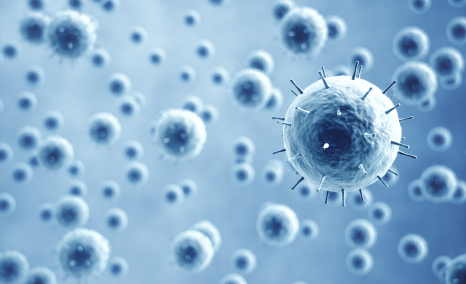The Transforming Pompe Disease Treatment Landscape in Emerging Markets
Sep 30, 2024
The treatment landscape for Pompe disease is undergoing a remarkable shift, especially within emerging markets, as increased awareness, regulatory advancements, and broader access to cutting-edge therapies begin to reshape the future for patients. Pompe disease is a rare and inherited genetic disorder caused by a deficiency in the enzyme acid alpha-glucosidase (GAA), leading to the accumulation of glycogen in muscle tissues, which results in severe muscle weakness and potentially life-threatening complications. Historically, this condition has been more commonly diagnosed and treated in developed regions such as North America and Europe. However, as Pompe disease emerging markets like the UAE, Saudi Arabia, and countries within the Asia-Pacific region gain traction, there’s a noticeable pivot towards addressing this rare condition on a global scale.
Several key drivers are fueling the evolution of Pompe disease therapies in emerging markets, including rising healthcare expenditures, proactive government involvement, and increasing focus on rare disease research. According to DelveInsight’s analysis, the Pompe disease therapeutic market in 10 emerging markets, including the Middle East, was USD 116.26 million in 2017 and is to grow to USD 358.20 million by 2028, reflecting a CAGR of 10.77% over this period. This robust growth trajectory highlights the growing importance of these regions in shaping the global Pompe disease treatment scenario, particularly as access to life-saving therapies like enzyme replacement therapy (ERT) expands.
Recent regulatory approvals have played a pivotal role in enhancing access to innovative Pompe disease drugs within emerging markets, facilitating the global adoption of advanced therapies. On September 28, 2023, Amicus Therapeutics received FDA approval for POMBILITI (cipaglucosidase alfa-atga) and OPFOLDA (miglustat), marking the introduction of the first-ever two-component therapy for adults with late-onset Pompe disease (LOPD). This dual treatment strategy, combining a recombinant human GAA enzyme with an enzyme stabilizer, is designed to improve patient outcomes, particularly for individuals who have not adequately responded to existing therapies. These groundbreaking approvals are expected to have ripple effects across the globe, particularly in Pompe disease markets, where patients previously had limited access to such transformative treatments.
Downloads
Click Here To Get the Article in PDF
Recent Articles
- Navigating Challenges in Pompe Disease Treatment and Research in Eastern Europe
- Advances in Pompe Disease Treatment: From ERT to New Therapies
- Assessment of Key Products that Got FDA Approval in Second Half (H2) of 2021
- Pompe Disease Treatment Landscape
- BeiGene’s Brukinsa Approval; FDA Approval to Seagen’s TUKYSA; NICE Recommends Alnylam’s Amvuttra;...
Another critical milestone in the Pompe disease therapeutic market was the approval of NEXVIADYME (avalglucosidase alfa-ngpt) by the FDA on August 6, 2021, for the treatment of late-onset Pompe disease in patients aged one year and older. NEXVIADYME was granted several designations, including Fast Track, Priority Review, and Breakthrough Therapy status, underscoring its potential to meet the unmet needs of Pompe disease patients. The global availability of such therapies is essential, particularly as emerging markets begin to embrace new treatment options. On June 28, 2022, the European Commission granted marketing authorization for NEXVIADYME. NEXVIADYME is the first newly approved treatment for Pompe disease in Europe since 2006 when the European Commission previously authorized a therapy. This treatment has been approved in several markets globally, including the European Union, the United States, Japan, Canada, Switzerland, Australia, Brazil, Taiwan, and the United Arab Emirates. Outside Europe, it is marketed as NEXVIAZYME. In the U.S. and Japan, most patients previously treated with MYOZYME (alglucosidase alfa) have already transitioned, or are in the process of switching, to NEXVIAZYME.
Countries like Japan and China are rapidly advancing their healthcare infrastructure, while the Middle East is also benefiting from collaborations with pharmaceutical companies like Sanofi and Amicus Therapeutics, enhancing their ability to address rare conditions like Pompe disease.
While Pompe disease is categorized as a rare disorder, its global prevalence, particularly in emerging markets, continues to grow as diagnostic capabilities and awareness improve. Pompe disease affects diverse populations and ethnic groups globally, with varying incidence rates. While it’s typically estimated to occur in around 1 in 40,000 births in the United States and the Netherlands, a recent study in Missouri revealed a significantly higher incidence of 1 in 5,463 births. This suggests a possible ‘founder effect’ contributing to the increased prevalence. Similar patterns are observed in specific populations, such as Black Americans and individuals in Taiwan, where distinct pathogenic variants of the disease have been identified. This slight growth underscores the increased capability of healthcare systems in these regions to detect and diagnose the condition earlier, particularly as newborn screening programs become more widespread.
This surge in diagnoses is particularly notable in the Middle East. Countries like the UAE and Saudi Arabia have significantly expanded their newborn screening initiatives to include tests for Pompe disease, which has allowed for earlier detection and timely intervention with Pompe disease drugs. Additionally, a growing number of clinical trials and partnerships with international pharmaceutical companies are helping these countries become key players in rare disease treatment. The UAE, for instance, has seen a remarkable expansion of its healthcare system, attracting global firms to invest in rare disease research, including Pompe disease, as part of broader initiatives to diversify its economy through life sciences.
Despite the positive outlook, Pompe disease emerging markets face several significant challenges. The cost of treatment remains one of the largest barriers to broad access. Enzyme replacement therapy (ERT), the cornerstone of Pompe disease treatment, is often prohibitively expensive, particularly for patients in low- to middle-income countries. This cost issue is compounded by the fact that many healthcare systems in these regions are still developing, with uneven access to specialists and facilities capable of managing Pompe disease therapies.

A lack of awareness about Pompe disease symptoms among healthcare professionals in certain regions further exacerbates the challenges of early diagnosis and intervention. For example, many healthcare providers in lower-income countries may not be adequately trained to recognize the subtle early signs of Pompe disease, leading to delays in treatment. Moreover, there is still a shortage of healthcare professionals skilled in rare disease management, which can result in misdiagnoses or prolonged waiting periods for specialist referrals.
Despite these hurdles, the future of Pompe disease treatment in emerging markets remains bright. As more countries adopt newborn screening for rare genetic disorders and invest in healthcare infrastructure, the reach of Pompe disease therapies is expected to expand significantly. For instance, the US Pompe disease market represented 65% of diagnosed cases across the 7MM (US, EU4, UK, and Japan) in 2023, but the rise in cases in Asia-Pacific and the Middle East suggests a shift in global market dynamics.
Furthermore, ongoing gene therapy research offers a beacon of hope for long-term solutions beyond traditional ERT. Several companies are exploring gene therapies aimed at providing a more permanent solution to the enzyme deficiency that causes Pompe disease. The growing presence of clinical trials in emerging markets will play a pivotal role in advancing these new therapies as more countries strive to become clinical research hubs.
Ultimately, the global transformation of the Pompe disease market is being shaped by emerging regions that are stepping up to the challenge of rare disease treatment. Through continued collaboration between pharmaceutical companies, governments, and healthcare providers, Pompe disease emerging markets are poised to drive significant advancements in the diagnosis, treatment, and management of this rare and debilitating condition.

Downloads
Article in PDF
Recent Articles
- Assessment of Key Products that Got FDA Approval in Second Half (H2) of 2021
- Immix Bio’s NXC-201 Gets FDA RMAT for AL Amyloidosis; Biodexa’s eRapa Wins Fast Track for Familia...
- Transforming Pompe Disease Care: Latest Innovations and Strategic Advances in Treatment
- Navigating Challenges in Pompe Disease Treatment and Research in Eastern Europe
- Advances in Pompe Disease Treatment: From ERT to New Therapies



